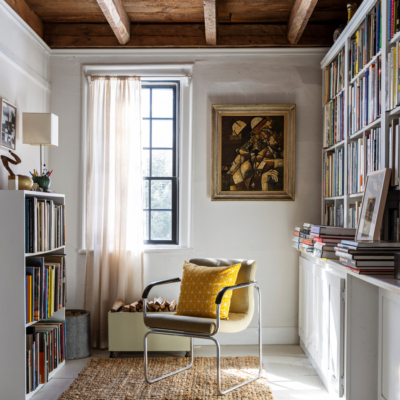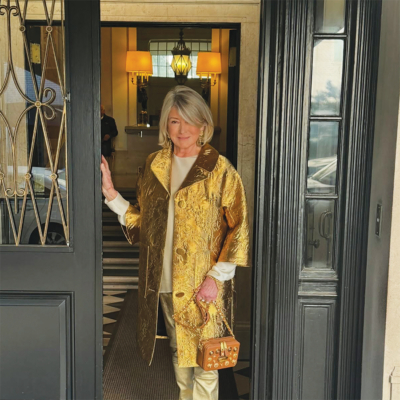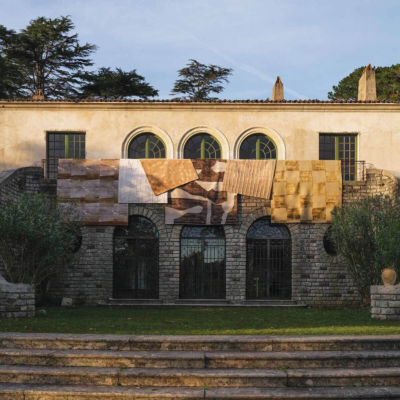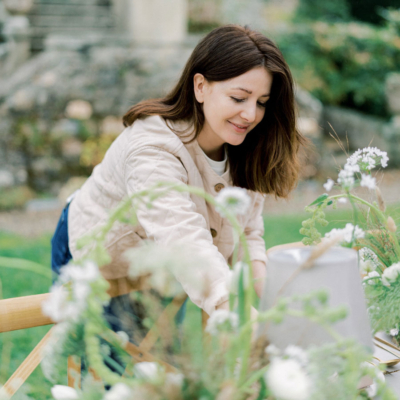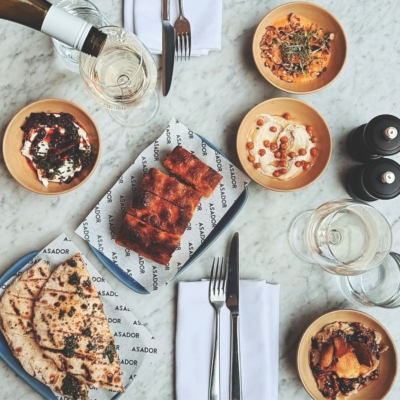Filmmaker John Boorman has lived in Ireland for 50 years. Over spring and summer, with his son and daughter as lockdown companions, he kept a diary of life on his Co Wicklow estate. Now, the diary is a beautiful book, with illustrations by artist Susan Morley. In it, his son LEE BOORMAN writes about a precious reconnection with his father and the place where he spent his childhood …
During the lockdown, in the spring and early summer of 2020, I was fortunate to be working remotely in my childhood home in Annamoe, Co Wicklow, self-isolating with my father and younger sister.
The house is an old rectory that Dad bought 50 years ago, surrounded by woodland, meadows and streams. It – or more specifically, the land – is the host of my fondest childhood memories and is to this day the site of many of my escapist daydreams (especially now that I have returned to Dublin).
I spent the majority of the days hunched over my computer or on the phone, responding to the various queries or projects directed to me. However, early in the morning before work began, or late in the evening when it had abated, the lockdown also enabled me to explore the land where I grew up, to an extent that I have not been able to do since I left the Glebe at nine years of age. I climbed trees that I had not climbed in 15 years. I swam daily (or as close to daily as possible) in rivers and lakes in the Wicklow mountains. I caught trout, snared rabbits and watched birds. I have been in stare-offs with the deer that graze these hills.
I have been allowed to witness a miniscule fraction of the life of the elusive kingfisher, spirit of the river. The heron has watched me with its haughty contempt, and the red squirrel has fled from me (unwarrantedly, of course, though he could not know that I would not harm him).
I also toured the land with my father, who has lived in and loved this place for half a century. We spoke of trees, of the river, and the wildlife that were our neighbours. He shared his experiences, his regrets, and, remarkably after all this time, his remaining hopes for the land.
I was given the pleasure of witnessing the true power of the place through him as we rambled together during this time.
One warm day we decided we would swim in the river that runs through the land, the Avonmore. We used to swim here regularly, and this activity was a favourite of Dad’s and mine. However, it had been beyond his reach since he lost the strength in his legs. Nevertheless, together we were able to make our way down to an area where the river runs deep. A place where he taught me (and my six other siblings) to swim.
I managed to shift, push and pull him off the bank and into the water. For a moment we stood there, hesitant, inching forward, him gripping my arm as we slowly made our way towards the centre of the river.
But once Dad was waist-deep, magic happened. In the river he stood without my aid, supported only by his arms paddling in the water and by the gentle embrace of the current. All hesitation drifted away and he plunged in with abandon, enveloped by the black waters. I waited with no small amount of trepidation for him to resurface. After a moment-long eternity he did, and I swam alongside him, giving gentle guidance or direction when needed.
After a few minutes of swimming, the river gave another gift: it returned to Dad his confidence; confidence enough to disregard the flotation device provided to him by a well-meaning but paternalistic doctor. Then, after fully submitting to the river, Dad gained a boyishness, an excitement, a desire to splash and dive and play. He smiled and laughed; perhaps he even shed a discreet tear? But that is between him and the river.
Regardless of the weather, the Avonmore retains a frigidly cold core, making it almost a penance to swim in. When I was twelve, Dad took me to the Midnight Sun Film Festival in Finland. During that trip we were brought to a true glacial lake, deep in the Arctic Circle. We alternated between hot saunas and dips in the ice water. Thanks in no small part to the many years we spent swimming in the Avonmore, which has its own glacial past, Dad and I did not shame ourselves amongst the chionophilic Finns.
But once Dad was waist-deep, magic happened. In the river he stood without my aid, supported only by his arms paddling in the water and by the GENTLE EMBRACE OF THE CURRENT.
However, Dad feels the cold more these days, and I admit I was feeling less than warm at this point myself. So I asked if he wanted to get out. “Can we go across to the stone once more?” was his reply. How could I refuse such a reasonable request? The river had given him back the years that he had spent, if only for the length of our swim.
On another day during our joint isolation, we decided to venture into the groves of native woodland that Dad had planted almost 30 years previously. I roamed those woods often, mostly following my dog as she explored the various scents and trails. However, Dad had not returned to be amongst his trees for years due to his poor mobility.
The groves lie in a glen nestled between three hills and two rivers. They were planted in an naturalistic, asymmetric way to mimic the flow of a stream, or the meandering of deer trails, making them a leafy paradise for a wild young boy. But what was once human-designed woodland (even so as to resemble a natural forest) had been reclaimed entirely. Birds, rabbits and deer were its residents and their signs were abundant. The trees themselves, which had grown out as well as up, had knocked over the fences put in place to protect them from ravenous herbivores, and in this way they had accentuated the natural form of the groves. Most inspiring of all, saplings had sprung up in the corridors of grassland between the trees – notwithstanding the derelict fencing – thereby doing away with the last remnants of man’s influence.
It had become a true young wildwood.
When I was a boy, Dad and I would walk in these woods together. He would send me into a grove and wait on the other side for me to navigate my way through the thick underbrush. He would then ask me to name the trees I had seen along the way. Oak, ash, alder, birch, willow, aspen, beech, holly, lime, pine, larch. I learnt them all; not only their names, but the shape of their leaf, the texture of their bark, how tall they grew, how wide, when they came into leaf and when they gave them up in the autumn.
I came to love them not just for how high I could climb or how they would allow me to hide from the outside world, but for their features, for their diversity and for their warmth.
Now, as I pushed Dad’s wheelchair across the long tufts of bog grass and under the branches (making this woodland wheelchair-accessible, I might add), he would point out a tree and ask me its name – not to test me, but hoping that my young eyes could compensate for his old ones. My childhood training had paid off, however, as Dad’s face would light up upon hearing the name of the trees, his memory stirring: “Ah yes, a pedunculate oak – it has that tail on the leaf. We planted mostly sessile oaks because the woods along Loch Dan and Glendalough are sessile. But I have a fondness for the pedunculate oak, so, I planted a few of those as well.”
When we approached the largest grove, full of oak and birch and aspen, I offered to carry Dad on my back as we had reached the wheelchair’s limit. I hoisted him up and took a hesitant step forward. His weight was not insurmountable, but a grown man is an awkward thing to carry. The ambience of the woods, and Dad’s weight on my back, jolted back memories: Dad had carried me on his shoulders for years (“uppity”, we called it) and through this very woodland, though at that time both the trees and I were much smaller.
Now, as I held Dad and he gazed in wonder at the unending green, any strain I felt by his weight was alleviated. We walked into the heart of our small forest and marvelled at its growth. In his lifetime he had planted these trees as saplings, cared for them, and now he got to witness their adolescence. They will outlive him, and me, but we were granted a premonition of the great woodland that they will one day become.

John Boorman’s Nature Diary, (Lilliput Press, €14.99) with illustrations by Susan Morley, is out now.
LOVETHEGLOSS.IE?
Sign up to our MAILING LIST now for a roundup of the latest fashion, beauty, interiors and entertaining news from THE GLOSS MAGAZINE’s daily dispatches.







